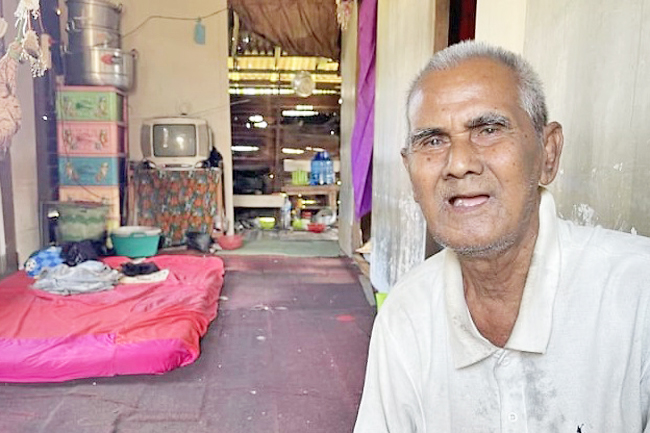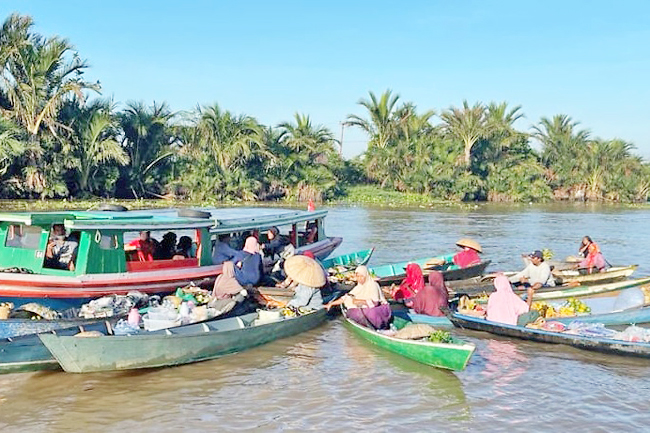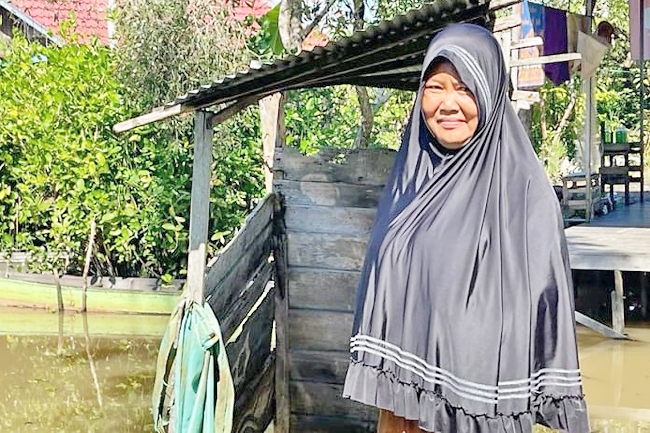Kiki Siregar
CNA – Every time Ramjaena wants to use the toilet, she first checks if there is anyone in the vicinity of her home.
Like most residents of Paku Alam village which lies on the tributary of Martapura river, her house is built on stilts and situated along the waterway.
In front of her house is a small, wooden walkway which leads to a 1.5-square-metre latrine made of hardwood, also built on stilts.
A piece of cloth is used as a substitute for a built-in door to allow for privacy when she or her family members have to use the latrine. Their waste is deposited directly into the river.
But there is no total privacy. “What falls (into the river) … It’s embarrassing,” said Ramjaena, 35, who goes by one name.
In Indonesia’s South Kalimantan province, there are about 150 rivers and thousands of such latrines. Locals typically refer to them as “floating toilets”.
This is a problem in the region of over four million people as they end up polluting the water, which is the lifeblood of the residents.
Ramjaena and other villagers also told CNA that they are uncomfortable when they need to answer the call of nature in such a way. Their preference is to have proper toilets.
Environmentalists have urged the government to look into the problem.




However, it is easier said than done and despite several programmes to eliminate these floating latrines, many are still in use.
Executive director of non-governmental organisation (NGO) Walhi South Kalimantan Kisworo Dwi Cahyono said that historically, South Kalimantan and its former capital of Banjarmasin have always been known for their numerous rivers and tributaries.
“This means that culturally and traditionally, people have not been far from the rivers… It is a habit of the communities to conduct their activities in the river such as bathing, urinating and defaecating, and even commuting (by boat),” said Cahyono.
Head of the provincial environment agency Hanifah Dwi Nirwana noted that most people along the rivers of South Kalimantan have come to rely on floating toilets over the years.
She said that the local government does not know the exact number of such households.
“It is an old habit for people to live near the river … They have limited access to clean water if they live on land,” said Nirwana.
She added that it is part of South Kalimantan’s traditional way of life, as people have a habit of washing their clothes in the rivers and mingling with neighbours.
This way of life is especially visible in the early morning in Banjarmasin when villagers bathe along the Martapura river or row to the famous floating market Lok Baintan, which is a popular tourist attraction.
However, locals interviewed by CNA said that the phenomenon is not just due to their traditional way of life.
Ramjaena of Paku Alam said the main reason why she has been using a floating toilet is due to financial difficulties.
“My toilet is like that because I don’t have money (to build a proper toilet inside the house),” she said.
One needs to fork out about INR5 million (USD 333) to build a proper toilet, which is above the provincial minimum monthly wage of about INR3 million.
It is out of reach for her and her husband who are farmers with four children.
Idup, who also lives in Paku Alam told CNA that he can only afford to have a floating toilet.
“I wait until the surrounding is quiet when I want to use it,” said the farmer who is in his 70s.
Like many other Indonesians, he goes with one name.
Some families even have to share a floating toilet.
Community head Abdus Samad is among those who are in this group. “We share the toilet because we don’t have money. So we collected money together (to build a shared toilet).”
In the past, floating toilets may not have been considered a problem as there were fewer of them, said Cahyono the environmentalist.
But as the population in South Kalimantan grew, so did the number of floating latrines.
Based on the provincial government’s research, the river water contains high levels of bacteria such as Escherichia coli (E. coli), a type of faecal coliform often found in the intestines of animals and humans which can cause illness.
“Not only in the Martapura river but also upstream, the water is below the standard quality,” Nirwana of the South Kalimantan environmental agency told CNA.
There are many parameters to assess water cleanliness, she said, such as the amount of dissolved oxygen.
“If the dissolved oxygen amount is low, fishes cannot live well. In the past, when we went fishing in the river, it was easy to catch a big fish or big prawns. But now it has become harder.
“So the ecosystem is disturbed,” said Nirwana.
She added the agency aims to achieve the United Nations 2030 sustainable development goals targets, one of which is clean water and sanitation.
“Our water quality is still not good. It is about 54.25 (on the water quality index), so it is average.”
In Indonesia, water quality is assessed based on certain criteria such as the amount of dissolved oxygen and faecal coliform in water as directed by a ministerial regulation.
A score of between zero to 50 means that the water quality ranges from very deficient to deficient. If the score is between 51 to 100, it means that the water quality is moderate to very good.
Nirwana noted that this also affects the province’s score on the overall environmental index, which currently is around 71, out of a maximum score of 100.
The overall environmental index comprises the water quality index, seawater quality index, peat ecosystem quality index, air quality index, and land quality index.
Banjarmasin-based urban design expert Akbar Rahman called for all floating toilets to be torn down.
“The floating latrines cause the river to become a place for faeces which can increase water pollution. Especially because the residents who live on the river banks also use the river water for bathing, washing, urinating and defaecating. So the water used by people is unhealthy,” said Rahman.
However, Cahyono the environmentalist noted that floating toilets are not the only source of water pollution in the province.
“We shouldn’t just blame the latrines because there are also industries and mining here,” he said.





